Calculus II Exam 3
1/35
There's no tags or description
Looks like no tags are added yet.
Name | Mastery | Learn | Test | Matching | Spaced |
|---|
No study sessions yet.
36 Terms
Identify the P-Series
n# or sqrtn

Identify the Geometric Series
r is directly to power of n/k
a is what’s not attached
#n
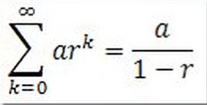
Solving P-Series
Identify P aka the power that n/k is to
for multiple of them, P is the sum
Compare P to 1
Absolutely Converges if P is greater than 1
Diverges if P is less than or equal to 1
Solving Geometric Series
Identify r aka the # that is to the power of k/n
if in denominator, only take the value of what is directly attached to k/n, but remember if its a fraction or not being in the denominator
if # is to like 2n, keep the power of 2 in r
Ask: Is |r| < 1?
Yes → Absolutely Converges to s= a/1-r
to find a, plug in number n is = to in sigma
No → Diverges
To get rid of square roots…
Multiply by the conjugate and use (A-B) (A+B) = A²-B²
Identify Telescoping Series
Terms subtract and when expanded, cancel out only leaving first and last term
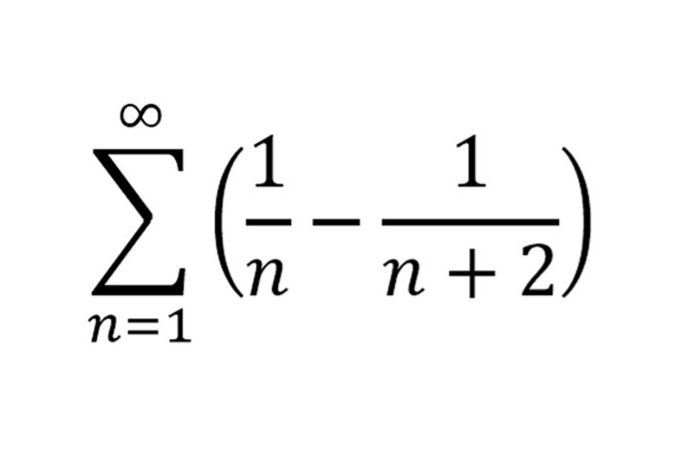
Solving Telescoping Series
Expand the series
last term is just the second value from the original series but with n’s
Cancel out terms except first and last which will be combined
Take the limit of this
this is the sequence of partial sums
If it converges, then so does the series
If it diverges, then so does the series
Identifying Almost P-Series
if k# or sqrtk is added/subtracted by another # or variable (s)
Identifying Almost Geometric Series
if #k is added/subtracted by another # or variable
Solving Almost Series
Determine if almost p-series or geo series
Take away lower degree terms to make look alike series Σ bn
State “Compare to [insert Σ bn]
Decide if using Limit Comparison Test or Direct Comparison Test
State the test
Perform the test
Clearly state conclusion
Limit Comparison Test
Use when taking away more than one term from numerator and denominator to create Σ bn
Find if Σ bn converges or diverges
Set up Lim n→ ∞ an/bn = L
Solve for L and determine if it is positive and finite
if so, then series will do what Σ bn does
If L is…
L = 0 or pos finite # and Σ bn converges, then og series converges OR tog series will follow what Σ bn does
L = ∞ and Σ bn diverges, og series diverges too
Direct Comparison Test
Use if only taking one term away to make Σ bn
Find if Σ bn converges or diverges
Compare the size of Σ an and Σ bn
Smaller than convergent is convergent
an smaller than bn and bn is convergent = convergent
Bigger than divergent is divergent
an bigger than bn and bn is divergent = divergent
Solving Series Not P, Geo, Q-log, Telescoping but Positive Term Series
Try Divergence Test (see if lim n→ an goes to 0
doesn’t go to 0 = diverges, you are done
does go to 0 = use Integral Test
Try Integral Test
Check the following conditions to use Integral Test
a) When plugging in # for k into denominator, can’t equal zero
B) Derivative of f(x) must be negative
Compute ∫ ∞ 1 f(x)
Determine if integral converges or diverges
series will do what integral does
Solving Series w/ All or Multiple Terms to a Single n Power
Use Root Test
Set up Lim n → ∞ nsqrt( | an | ) = L
Cancel terms if applicable
Determine value of L
Converges if L less than 1
Diverges if L greater than 1
Try something else if L =1
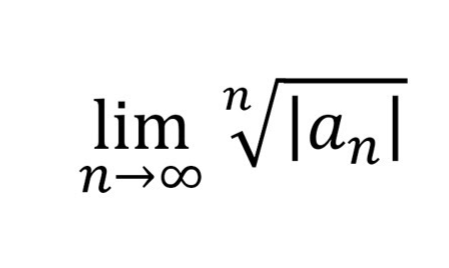
Solving Series with Factorials or Terms to Power of n
Use Ratio Test
Set up Lim n→ ∞ an+1/an = L
Cance terms if applicable
Determine value of L
Converges if L is less than 1
Diverges if L is greater than 1
Try something else if L = 1
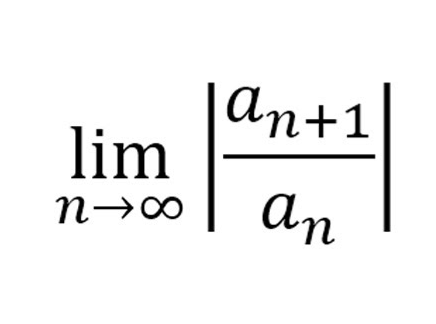
How to Write an+1
Add 1 to each n/k term
n# → (n+1)#
en or #n → _n+1
n! → (n+1) !
ke-k (k+1)(e-(k+1))
nn → (n+1)n+1
Constant #s don’t apply and stay the same
Identify Q-Log Series
P-series with log in numerator
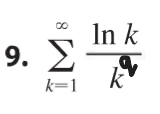
Solving Q-Log Series
Identify q aka the power k/n is to
Compare q to 1
Converges if q is greater than 1
Diverges if q is less than or equal to 1
Identify Alternating Series
When expanded, signs alternate
(a1, -a2, a3, -a4…)
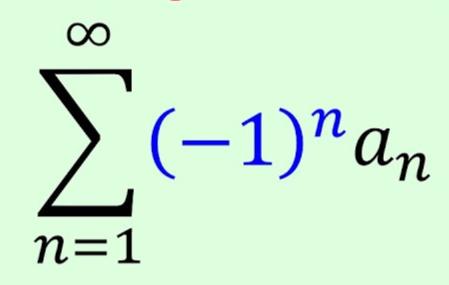
Solving Alternating Series
Use Alternating Series Test
Check two conditions; if both happen, converges, if not, diverges
a) Does Lim n→ ∞ an = 0?
b) Is an+1 less than an?
more on bottom makes term smaller
Determining Absolute Cvt, Conditional Cvt, or Divergence
Check for absolute convergence using Ratio Test/Root Test w/ absolute bars, Comparison Test, or Integral Test
For Ratio/Root tests, compare L to 1
Absolute convergent is L is less than 1
NOT absolute convergent if L is greater than 1
If not Absolute Cvt, check Conditional Cvt using Alternating Series Test
Use Alternating Series Test
if all conditions are met, converges, if not, diverges
Identify Alternate P-Series
They ALL converge
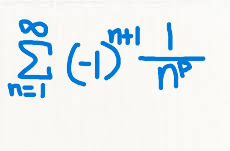
Finding Interval of Convergence
Use Ratio Test or Root Test w/ absolute bars both < 1
Decide which test to use
Plug in and cancel terms
Take out |x| or |x-#| or |x-#| / # and put in front of Lim
Solve for limit of an and multiply it by x
Then solve for x; what’s on the other side of < is R
Identify the center and draw a number line with center as middle and one point R distance to the left and another R distance to the right
Test each endpoint to see which gets brackets and parentheses
1. Let x = #
2. Plug in # into x in original equation
3. If diverges → don’t include. If converse → include
Taylor Series Centered at x = c

Taylor Series Centered at c = 0

Solving for Taylor Series
Find the first five derivatives of f(x)
Then, plug in value for center into x in the results for the derivatives
Plug into formula, simplify or cancel factorials if needed
Look and identify the series, check by plugging in to make sure
Maclaurin Series for e^x
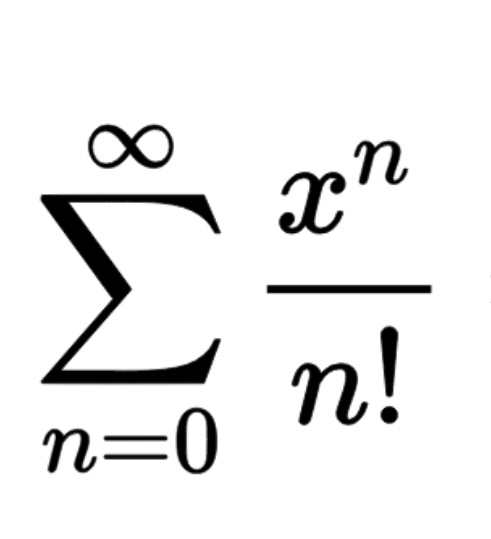
Maclaurin Series for sinx
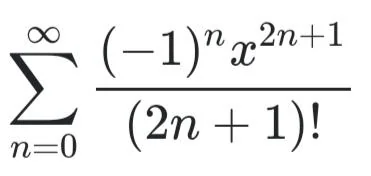
Maclaurin Series for cosx
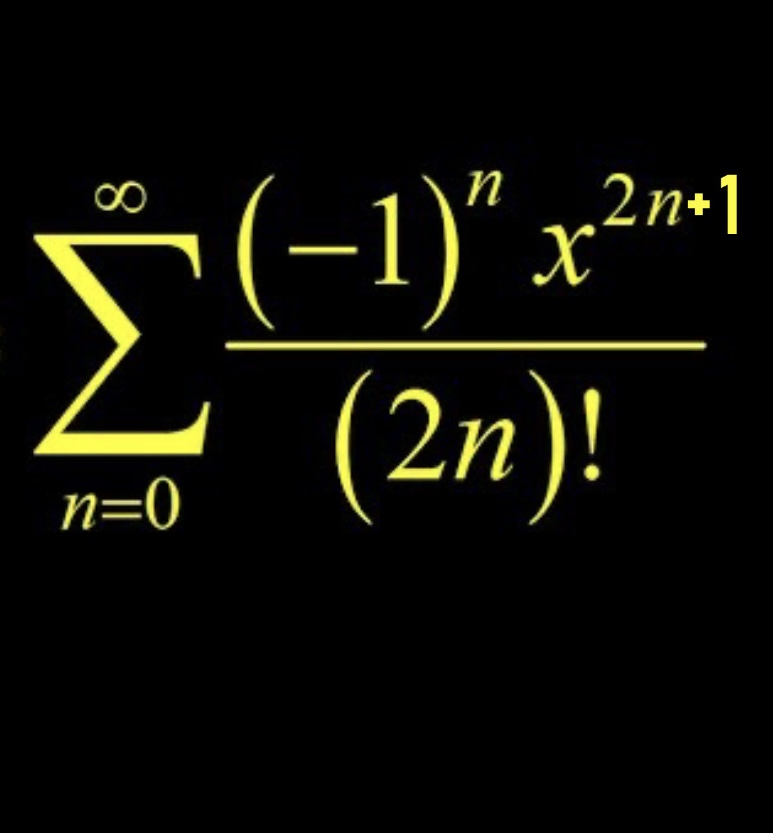
Maclaurin Series for 1 / 1 - x

Maclaurin Series for ln(1 + x)
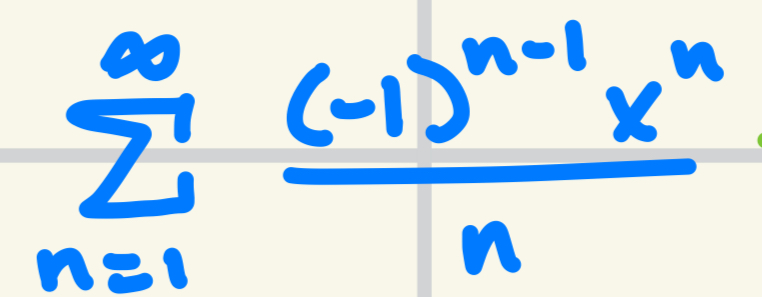
Maclaurin Series for arctanx
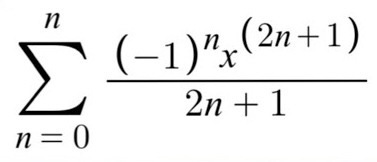
Maclaurin Series for ( 1 + x ) ^9

Finding Absolute/Conditional Cvt or Divergence for P-Series/Geo Series
Use the regular way to find convergence for them
If converges, is absolutely convergent
If diverges, it diverges and you’re done
Finding Absolute/Conditional Cvt or Divergence for Almost Series
Use Comparison Tests to Test for Absolute Convergence
if converges, is absolutely convergent
if diverges, check for conditional convergence
Finding Absolute/Conditional Cvt or Divergence using Integral Test
Check for absolute convergence using Integral Test
If converges, then absolutely converges
If diverges, check for conditional convergence
If needed, use AST to check for conditional convergence